-
Car Reviews
- All reviews
- Midsize SUVs
- Small cars
- Utes
- Small SUVs
- Large SUVs
- Large cars
- Sports SUVs
- Sports cars
- Vans
Latest reviews
- Car News
-
Car Comparisons
Latest comparisons
- Chasing Deals
As other rivals snag headlines by adding more power and capability, the Isuzu MU-X focuses on providing a huge amount of space and safety that help strike a better balance for family buyers
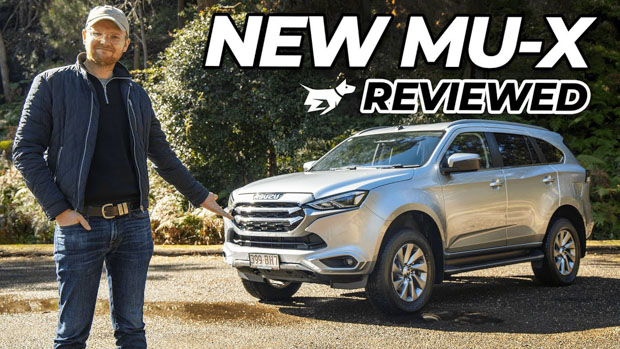
Big ute-based wagons like the Isuzu MU-X often get a bad wrap from industry experts and motoring journalist types, who point to its rudimentary underpinnings as a poor basis to build a comfortable and capable seven-seat four-wheel-drive.
However, Australians clearly don’t give a stuff. The long suspension of international travel during the coronavirus pandemic reminded Aussies there was great potential in exploring our own country – increasing demand for go-anywhere 4WD wagons with a few creature comforts: vehicles like the 2022 Isuzu MU-X.
The depths of the pandemic were the conditions the radically-improved, second-gen MU-X launched into locally in 2021. By the end of that year, the Isuzu managed to be the second best-selling large SUV under $70,000, runner up only after the all-conquering Toyota Land Cruiser Prado.
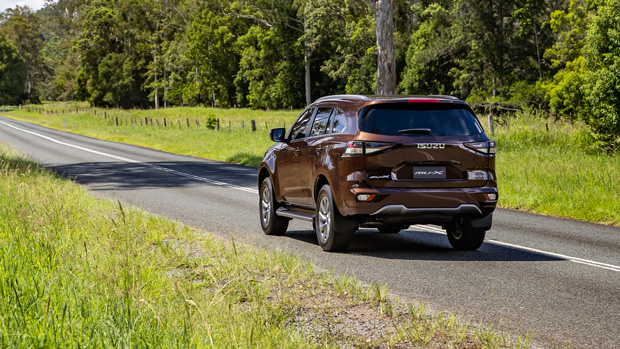
Isuzu clearly had its ear to the ground when designing the second-generation MU-X, as the new model has made clear improvements over its predecessor, most notably by making it a whole lot more desirable to live with day-to-day.
It’s these sorts of improvements the MU-X will need as it prepares to take on the incoming V6 diesel-equipped Ford Everest and likely a Prado successor in the coming years – with the Toyota probably picking up a six as well.
While these rivals will likely be fought at the top end of town with the top-spec, leather-bound MU-X LS-T; Isuzu hasn’t forgotten its roots as a seriously tough yet well-priced option for buyers, and it’s for this reason that the mid-spec LS-U exists.
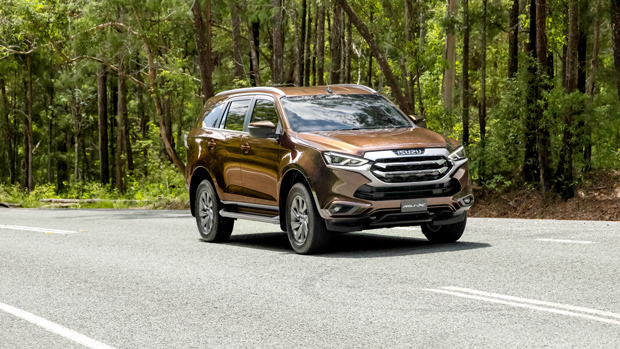
Priced at $61,400 before on-road costs when equipped with 4WD like our review car has, the MU-X LS-U is friendly $6000 cheaper than the equivalent LS-T and $6130 cheaper than a Prado GXL – and that’s after Isuzu added a steep $1500 price increase earlier this year.
But all of this matters little if what you’re getting is generally a bit average and thankfully the MU-X is a strong performer across the board, though that isn’t to say this Thai-built 4WD isn’t without issue when it comes to its on-road performance.
When climbing into the MU-X for the first time you’re quickly reminded that it’s a large vehicle. At 4850mm long, 1870mm wide and 1825mm tall, this is a big, boxy wagon designed to take two or four people and a lot of cargo – or up to seven people without too many accoutrements.
Compared to the previous-gen MU-X that lasted for nine years in Australia, the MU-X grew – but it remains a little shorter than a Prado. Still, the MU-X is much more manageable than a full-fat 300 Series Land Cruiser, which is more than 10cm wider again.
Conveniently narrower for off-road tracks, the Isuzu also impresses with generally great visibility thanks to the large glasshouse and huge side mirrors, though the slightly deceiving front-end drop-off could benefit from a camera at the front to help squeeze into those tighter carparks – though the parking sensors are still a great help for most situations.
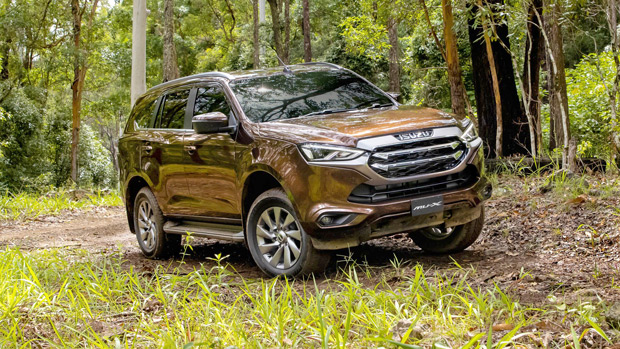
When driving around suburbia, the MU-X is best described as a ‘point and shoot’ vehicle as the seven-seat benefits from strong acceleration but ultimately falls victim to its particularly high centre of gravity in the corners.
The soft suspension setup, which allows for such great articulation off-road, means that low-speed corners require some patience to get around, though the ride is more composed when tacking some free-flowing highway roads at greater speeds.
Conversely, the softly-sprung nature of the suspension makes for a very comfortable experience, even after several hours behind the wheel – though the Isuzu is prone to a bit of gentle vertical rocking over small bumps that other 4WD wagons would be unfazed by.
This is particularly true on the LS-U variant on 18-inch alloy wheels, with seriously chunky sidewalls adding to the comfortable ride, which feels slightly firmer than the LS-T with larger 20-inch wheels.
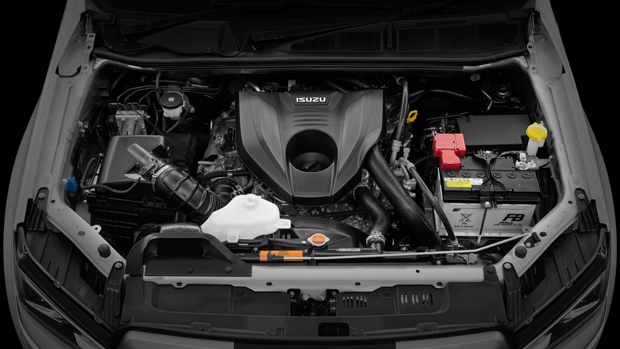
With the Mitsubishi Pajero now dead, the 3.0-litre turbo-diesel is the largest displacement four-cylinder engine in this class – though the 140kW of power and 450Nm of torque lag behind rivals like the Ford Everest V6 (184kW/600Nm) and the Toyota Fortuner’s 2.8-litre four-cylinder (150kW/500Nm). No petrol or hybrid option is available on the Isuzu.
But the Isuzu doesn’t feel particularly wanting for grunt either, and it pushes the class further by being one of the few affordable 4WD wagons to boast a 3.5-tonne towing capacity.
Coupled to this engine is a six-speed torque converter automatic transmission, which was largely undetectable during our testing, and generally, that’s a good thing.
Although some rivals like the new-gen Everest and current Prado are embracing full-time 4WD systems, the MU-X remains faithful to its part-time layout which remains locked in RWD mode while on the tarmac.
While the MU-X is hardly unstable, the torquey nature of the engine did see some rather theatrical loss of traction when setting off from the lights on rainy days, and the added assistance of the front wheels could bring some peace of mind in these conditions.
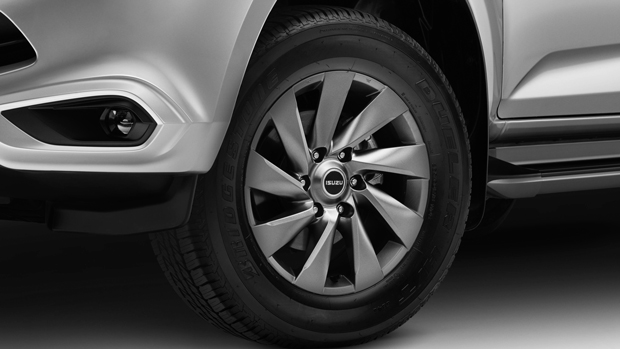
We kept to tarred roads during our test of the MU-X LS-U because it rained non-stop – these vehicles are highly capable off-road, but severe weather and driving land-slipping trails just don’t mix.
With a standard-fit locking rear differential and (a Prado, Everest, and Pajero Sport-beating) 235mm of ground clearance, matched and an 800mm wading depth, the MU-X certainly acts and looks the part.
Regular readers will remember the MU-X was deemed good enough to make it into Chasing Cars’ inaugural Car of the Year, and while the judges generally came away impressed, it was in our standardised testing that we discovered the Isuzu’s overly-cautious approach to the tuning of its safety systems.
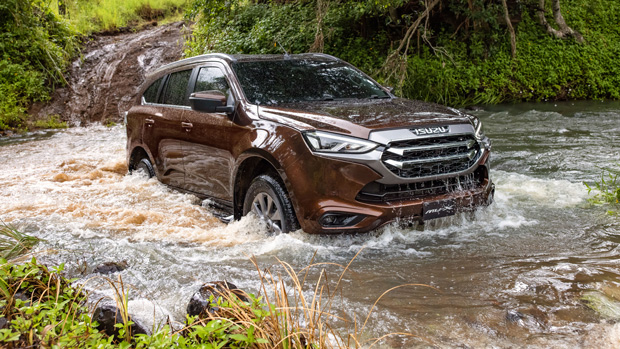
On tighter roads, the stability control of the MU-X has shown a tendency the pull the reins too soon, and the late yet jerky response of the lane-keep assistance function gets tiresome – making you want to turn off what could otherwise be a valuable feature.
However, these two points are really discrepancies in what makes up the most advanced safety suite in this segment – which still largely consists of some very elderly competition.
The MU-X is currently the only 4WD (aside from the 300 Series Land Cruiser), to score five stars under ANCAP’s strict new testing protocols that were introduced in 2020.
For this reason, the Isuzu features new innovations like a front-centre airbag and a host of active safety equipment including blind-spot monitoring, driver monitoring, rear cross-traffic alert, rear parking sensors and forwards AEB with intersection detection.
A big miss for family buyers is the absence of reversing AEB, though the MU-X does come standard with seatbelt reminders across all three rows, and the LS-U grade along with the LS-T are equipped with front parking sensors.
At just over $60,000 before on-roads, some buyers may be some that gaze around the cloth-wrapped and plastic-laden cabin of the LS-U with pessimism, while others may call it functional.
The ergonomics of the cabin space are generally very good, with the Isuzu fitting the manually adjustable front seats with electric lumbar support on the driver’s side though sadly the passenger doesn’t receive this luxury.
The cloth seats themselves are quite comfortable across all three rows, though I did notice this padded material was beginning to build up dirt and grime on the door-side armrests. Perhaps a leather-like material, like that found on the dashboard and steering wheel, would be a better fit for these high-traffic areas.
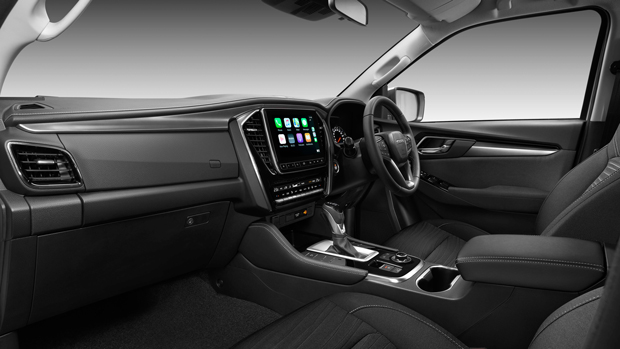
Build quality is generally solid across the cabin, though chrome trim pieces and the 9.0-inch touchscreen had a tendency to squeak when pressed. The solid thunk of the transmission is also deserving of a shifter made of more premium material than plastic, as the current stick feels cheaper than it should, and can become slippery with hand oils after a while.
The 9.0-inch touchscreen in question is a good size and relatively responsive, though the inbuilt software is confusing and looks dated. Thankfully wireless Apple CarPlay and wired Android Auto are standard, so you won’t have to use it much.
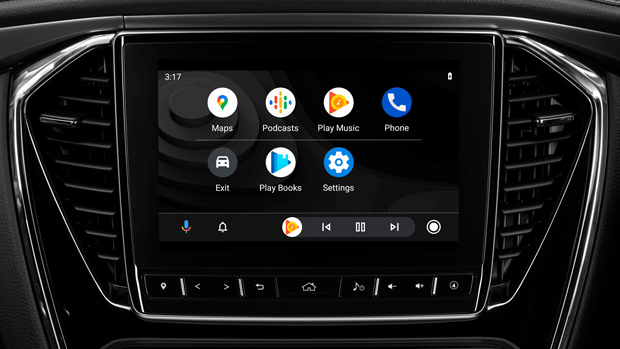
LS-U and LS-T grades score an eight-speaker sound system which serves its purpose but lacks clarity and depth once you turn up the volume knob.
Isuzu has made much of its improvements to the rear cabin space in the second-generation MU-X and it is indeed something for its engineers to be proud of; with ample legroom found in the second row when sitting behind my six-foot driving position, and I even found myself in relative comfort when seated in the third row – a rarity in any large SUV.
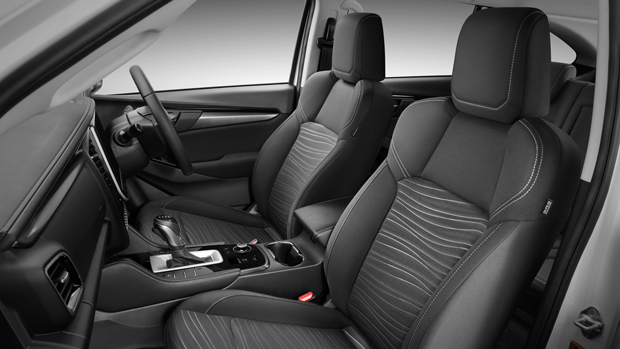
Rear-seat amenities include a separate fan control and two USB A ports in the second row, though those in the far back will have to make do with cup holders I’m afraid.
Easy-to-clean rubber floor mats have wisely been fitted across all three rows, which should make the MU-X LS-U easier to keep clean after getting up to the side skirts in mud.
With an underslung spare wheel, the boot space of the MU-X is predictably impressive, measuring 2138 litres with the second and third rows folded down, 1119 litres with the second row in place and 311 litres when all seven seats are in position, leaving just enough room for a few shopping bags but not a whole lot else.
During our testing, the MU-X LS-U saw an average fuel economy of 8.85L/100km across several hundred kilometres of urban and highway driving during terrible weather conditions, a figure that is only a touch higher than Isuzu’s official claim of 8.3L/100km.
Isuzu goes beyond the industry-standard five-year/unlimited-kilometre warranty by offering a longer six-year term, though it caps the kilometres at 150,000km which may provide troublesome for some buyers, but likely not many.
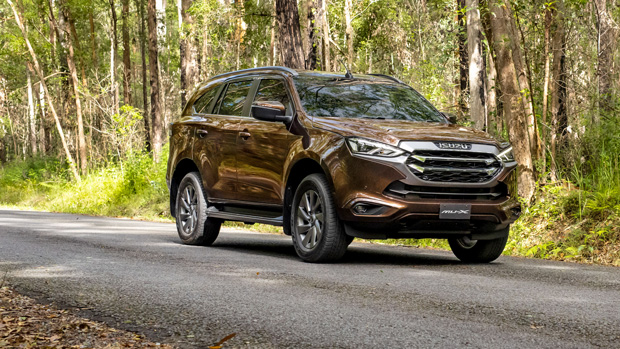
Accompanying this is a capped price servicing program that runs for an impressive seven years or 105,000km. Servicing intervals are every 15,000km or 12 months, whatever comes first.
The total cost across this seven-year period is capped at $3513, with an average cost of around $500 if you ignore the free checkup that’s due after 3000km or three months of ownership.
Across that same period and distance, you’ll pay $3693 to service a Pajero Sport and in the Fortuner you’ll pay just $1560, though this only applies up to servicing at the 60,000km mark – though short six-month service intervals means this coverage runs out after three years, not seven.
Few cars in Australia are required to fill as many roles as the high-riding 4WD, but the MU-X LS-U presents itself as a straight-forward vehicle with some intelligent thinking behind it.
We’re still early in the second-generation MU-X’s life cycle and it would be good to see continual improvements made to the over-zealous safety systems and less reliance placed on cheap, albeit durable, plastics around the cabin.
Isuzu is a small brand growing fast in Australia, and it’s easy to see why with its clear focus on safety and affordability, which can’t always be said for the MU-X’s rivals.
While the MU-X may lack the outright refinement and on-road dynamics of bigger and more expensive 4WDs, Isuzu manages to capture the family-friendly nature of more expensive 4WD vehicles at a notably lower price point.
Key specs (as tested)
About Chasing cars
Chasing Cars reviews are 100% independent.
Because we are powered by Budget Direct Insurance, we don’t receive advertising or sales revenue from car manufacturers.
We’re truly independent – giving you Australia’s best car reviews.
The estimate provided does not take into account your personal circumstances but is intended to give a general indication of the cost of insurance, in order to obtain a complete quote, please visit www.budgetdirect.com.au. Estimate includes 15%^ online discount.
^Conditions Apply
Budget Direct Insurance arranged by Auto & General Services Pty Ltd ACN 003 617 909(AGS) AFSL 241 411, for and on behalf of the insurer, Auto & General Insurance Company Limited(ABN 42 111 586 353, AFSL 285 571).Because we don’t know your financial needs, we can’t advise you if this insurance will suit you. You should consider your needs and the Product Disclosure Statement before making a decision to buy insurance. Terms and conditions apply.
Indicative quote based on assumptions including postcode , 40 year old male with no offences, licence suspensions or claims in the last 5 years, a NCD Rating 1 and no younger drivers listed. White car, driven up to 10,000kms a year, unfinanced, with no modifications, factory options and/or non-standard accessories, private use only and garaged at night.
^Online Discounts Terms & Conditions
1. Discounts apply to the premium paid for a new Budget Direct Gold Comprehensive Car Insurance, Third Party Property Only or Third Party Property, Fire & Theft Insurance policy initiated online on or after 29 March 2017. Discounts do not apply to optional Roadside Assistance.
2. Discounts do not apply to any renewal offer of insurance.
3. Discounts only apply to the insurance portion of the premium. Discounts are applied before government charges, taxes, levies and fees, including instalment processing fees (as applicable). The full extent of discounts may therefore be impacted.
4. We reserve the right to change the offer without notice.